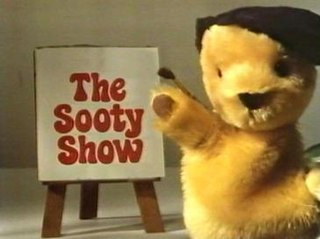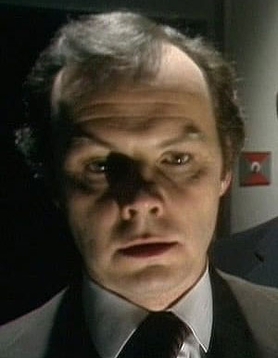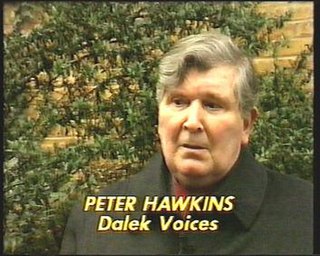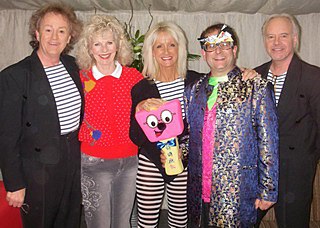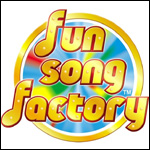| Home Video Title | Release Date | Episodes |
|---|
| Rainbow (VC1050) | 28 April 1986 | Mystery Bag, Pirates, What Happened to Tommy Tucker?, Music (1) – Voice and Hands, Going to the Funfair |
| Rainbow – Rainbow Goes Camping (TV9920) | 3 November 1986 | Camping, Dancing, What's Wrong with Bungle?, King for a Day |
| Rainbow: Small World + Goes Out (TV8002 & TV8003) | 5 October 1987 | Small World (1), Caterpillars and Butterflies, Looking After Baby, Small World (2), Going Out to the Circus, Going to a Toy Museum, Journey on a Narrow Boat, A Visit to a Safari Park |
| Rainbow – Down on the Farm (TV9957) | 5 October 1987 | Down on the Farm, Daydreaming, Going Swimming, A Day in the Country |
| Rainbow – Christmas Rainbow (TV9987) | 5 October 1987 | Wrapping/Unwrapping, The Christmas Story, Rainbow Christmas Show |
| Children's Favourites – Volume 2 (TV8011) | 1 February 1988 | The Ugly Duckling (Compilation VHS with 'Button Moon' and 'The Sooty Show') |
| Rainbow – Stories and Rhymes (TV8026) | 4 April 1988 | The Hare and the Tortoise, Nursery Rhymes (1), Rumpelstiltskin, Nursery Rhymes (2) |
| Rainbow – Rainbow Christmas Pantomime (TV8042) | 7 November 1988 | Rainbow Christmas Pantomime, Decorations, A Cold Day |
| Rainbow – Monster Makes/Guess Who I Am (WP0002) | 7 November 1988 | Monster Makes, Guess Who I Am |
| Rainbow – Music (TV8057) | 6 February 1989 | Music (1), Music (2) |
| Rainbow with Rod, Jane and Freddy – Stories and Rhymes Volume II (TV8046) | 10 April 1989 | The Highwayman, Noah's Ark (Compilation VHS with 'Rod, Jane and Freddy') |
| Children's Favourites Vol. 3 (LL0032) | 1 May 1989 | Floating and Sinking (Compilation VHS with 'Button Moon' and 'The Sooty Show') |
| Children's Favourites Vol. 4 (LL0033) | 1 May 1989 | George's Secret Place (Compilation VHS with 'Button Moon' and 'The Sooty Show') |
| Rainbow – Music (Lollipop Release) (LL0013) | 1 May 1989 | Music (1), Music (2), Music and Song |
| Children's Summer Stories (TV8060) | 5 June 1989 | Journey on a Narrow Boat (Compilation VHS with 'Button Moon' and 'The Sooty Show') |
| Rainbow – Rainbow Explores (TV8075) | 2 October 1989 | The Explorers, Ice and Snow, Mazes, Tracks and Trails, Outer Space |
| Children's Favourites: Bedtime Stories (TV8077) | 6 November 1989 | Whispers (Compilation VHS with 'Button Moon' and 'The Sooty Show') |
| Rainbow – Make and Do (TV8085) | 5 February 1990 | The Toymaker, Worried and Weary, Time and Space, Borrowing |
| Children's Holiday Favourites (TV8093) | 4 June 1990 | Family in the Garden (Compilation VHS with 'Rod, Jane and Freddy' and 'The Sooty Show') |
| Rainbow – Super Bungle and Other Stories (TV8100) | 6 August 1990 | Super Bungle, Geoffrey Babysits, No Accounting for George, Misbehaving |
| Rainbow and Rod, Jane and Freddy – Bumper Special (TV8114) | 10 September 1990 | Neighbours, Bungling Bungle, Practice Makes Perfect (Compilation VHS with 'Rod, Jane and Freddy') |
| Sooty and Rainbow (WP0025) | 1 October 1990 | Zipman and Bobbin (Compilation VHS with 'The Sooty Show') |
| Children's Club: Children's Favourites (KK0005) | 4 February 1991 | George's Secret Place (Compilation VHS with 'Button Moon' and 'The Sooty Show') |
| Rainbow – Big Time Video (TV8120) | 4 February 1991 | Keeping Tidy, Exercise is Fun, Planting Seeds, A Lazy Day, New for Old, Who Done It? |
| Rainbow with Rod, Jane and Freddy Video Fun Pack (TB0002) | 5 August 1991 | The Wall (Compilation VHS with 'Rod, Jane and Freddy') |
| Rainbow and Friends- Friends (WH1026) | 7 October 1991 | Friends, Why Did You Do That?, The Birthday Cake, Changes |
| Rainbow with Rod, Jane and Freddy Video Fun Pack Re Release (TB0002) | 3 February 1992 | The Wall (Compilation VHS with 'Rod, Jane and Freddy') |
| Rainbow – Zippy's Stories (TV8155) | 3 February 1992 | Naughty Zippy, Zippy Sets Them Up, Without a Voice, Something to Care For |
| Rainbow – Sing Song and Other Stories (TV8156) | 3 February 1992 | Sing Song, Taking Turns, I'm the King of the Castle, Surprise Surprise |
| Rainbow – Treasure Hunt and Other Stories (TV8163) | 1 June 1992 | Treasure Hunt, Safety First, Getting Organised, The Zippybread Man |
| Rainbow – The Seaside Show and Other Stories (TV8164) | 1 June 1992 | The Seaside Show, A Trip to Spain, Getting in a Muddle, Geoffrey's Big Occasion |
| The Christmas Collection (TV8165) | 5 October 1992 | Snow (Compilation VHS with 'The Sooty Show' and 'The Wind in the Willows') |
| Learn With Rainbow: The Invitation (WP0001) | 5 October 1992 | The Invitation, If Only We Hadn't |
| My Little Rainbow (ML0007) | 1 April 1996 | The Wall (Compilation VHS with 'Rod, Jane and Freddy') |
| My Little Rainbow: The Seaside Show (ML0016) | 1 July 1996 | The Seaside Show, A Trip to Spain |
| My Little Rainbow Christmas Special: Decorations (ML0029) | 4 November 1996 | Decorations, A Cold Day |
| Rainbow – Songs, Rhymes, Stories and Tales | 2000 | Rumpelstilskin, The Ugly Duckling, The Hare and the Tortoise, Sing A Long |
| Cult Kids Classics | 2001 | Naughty Zippy (Compilation DVD with 'Chorlton and the Wheelies', 'Danger Mouse', 'Count Duckula', 'Jamie and the Magic Torch' and 'Button Moon' |
| Cult Kids Classics 2 | 5 March 2001 | Zippy is Tongue Tied (Compilation DVD with 'Jamie and the Magic Torch', 'Danger Mouse', 'Chorlton and the Wheelies', 'Count Duckula' and 'The Sooty Show' |
| Rainbow – Zippy Sets Them Up | 6 August 2001 | Zipman and Bobbin, Zippy's in Love, Hot Day, Zippy Sets Them Up, Bungle's High and Mighty Day, Zippy Wants To Be A Comedian, George's Secret Wish |
| Rainbow – Zip Up Zippy | 22 October 2001 | Lions and Tigers, Getting Organized, Same and Different, Who Done It, Rejected and Neglected, Social Behaviour (Self), Sympathy |
| "I Love Cult Kids" | 2002 | Detectives (Compilation DVD with "Danger Mouse", "Chorlton and the Wheelies", "Count Duckula", "Jamie and the Magic Torch", "Cockleshell Bay" and "Button Moon") |
| "Rainbow – My Mate Zippy" | 11 March 2002 | Zippy is Tongue Tied, Super Bungle, The Show Offs, Zippy's Cover Up Job, Night Out, The Singing Lesson |
| "Classic Kids Collection" | 2002 | The Zippybread Man (Compilation DVD with "Count Duckula", "Chorlton and the Wheelies", "Button Moon", "Jamie and the Magic Torch" and "Danger Mouse" |
| "Rainbow – 30th Anniversary Special | 2002 | The Birthday Cake, I Want to be a Popstar, George's Secret Place, The Explorers, Without a Voice, Outer Space |



